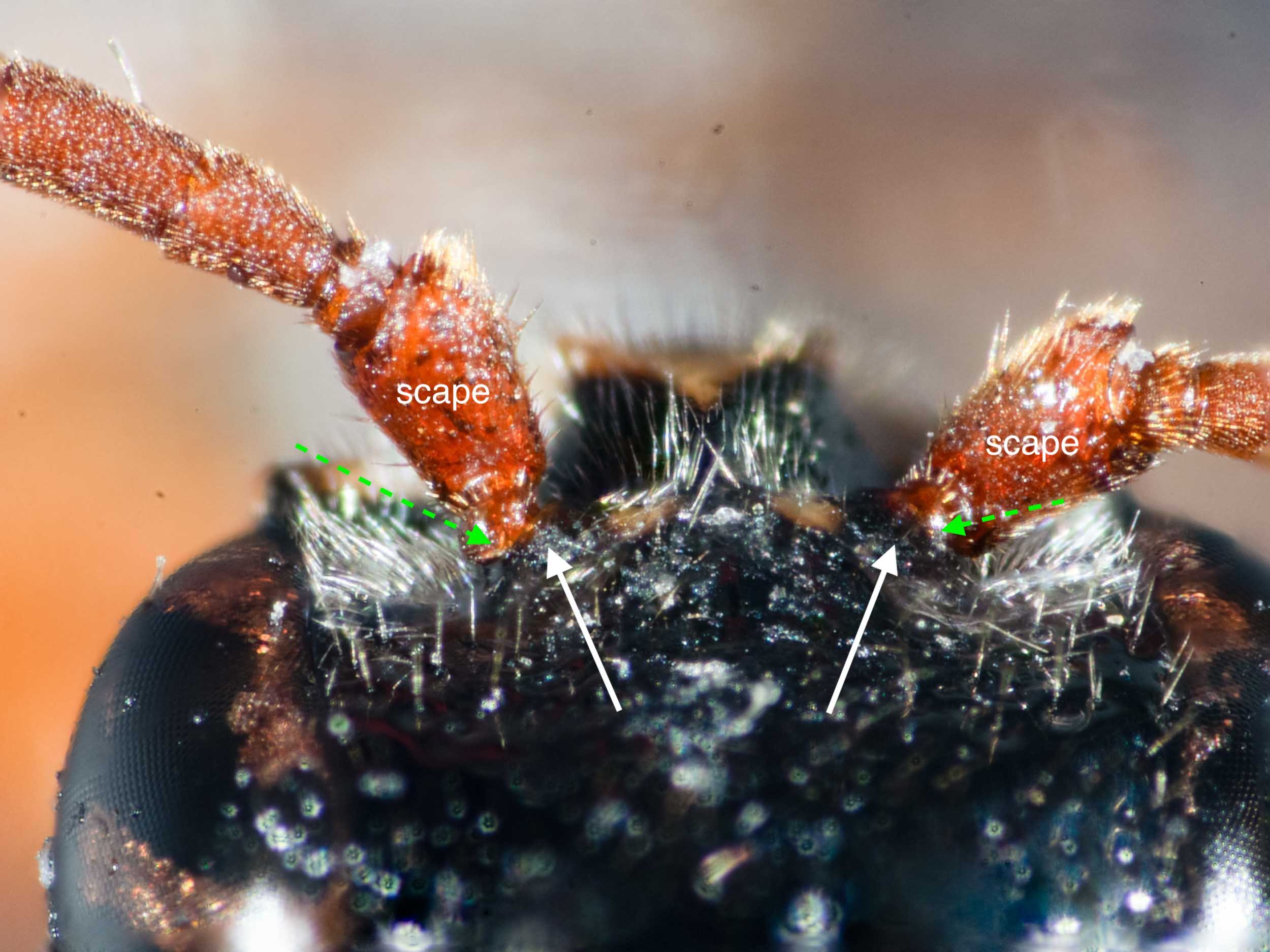Thynninae (Thynnidae) 2311A

Workbook
Update: March 2024
I’m now reasonably confident that this is Eirone. The unspecialised nature of both S8 and T7, along with the cluster of stiff, incurved hairs at the apex of the parameres is quite convincing. The ventral surface of the head is also unspecialised, unlike some genera in Brown’s (2010) cluster 3.
This wasp was collected by Janet Whitington in Nildottie, South Australia. Her sighting on iNaturalist had me puzzled … the family identity of the wasp was not immediately obvious, and I wondered if it might be an unfamiliar crabronid. As it was already dead, I asked her to send it to me for a closer look.
Specimen ID: 2311A
family: Thynnidae
The shape of the pronotum indicates Thynnidae or Tiphiidae. I exclude Pompilidae, which have a similar pronotum, as the legs are neither long nor particularly spinose. Other candidate families were excluded on the basis of eye shape (Vespidae), pronotum shape (Crabronidae), wing venation (Scoliidae), metasoma shape (Sphecidae).
The ventral point of the pronotum puzzled me (see 3rd photo in panel above). In Vespidae it is acute, while in Thynnidae/Tiphiidae it is usually rounded (Naumann 1991, p. 974). Perhaps this is one of the exceptions. More likely, the more dorsal rounded edge is the one referred to. So I’m reconciled with this little conundrum and happy to tick the boxes for Thynnidae/Tiphiidae.
Further confirmation of the family identity is the shape of the mesosternum - the laminate expansions covering the bases of the mesocoxae. This excludes Crabronidae, Sphecidae, Ampulicidae (Naumann, 1991, p. 938), Pompilidae and Mutilidae (Naumann, 1991, p. 974).
The Thynnidae are a surprising challenging family to identify. A few years ago I made my first attempt to come to terms with this taxon (see Getting to know flower wasps). Thynnidae are often defined more by the absence of characters seen in other families, than by any particular unifying features. In addition, I’ve found no published review summarising the known genera. Even diagnostics for the subfamilies take some tracking down.
Click here to download pdf version of this table
subfamily: Thynninae
Some male Thynninae are easily recognised. They have a very strong spur vein in the forewing or a clearly protruding brow ridge above the antennal sockets. See the examples below, where key features are evident even in field photos.
Not so Janet’s wasp. This particular species shares several features with Anthoboscinae.
However, I’m now convinced that this is indeed a male Thynninae. Well, just convinced. Ultimately, the shape of the frons was the deciding factor. It is rather subtle, only clearly visible at high magnification, at the right angle. This would be almost impossible to detect in a field photo … but it is there.
The shape of the hypopygium of this species is unhelpful in distinguishing between the two subfamilies. In many male Thynninae the structure bears obvious spines. Here the hypopygium is completely covered, dorsally, by the epipygium. There is certainly no spinose projection at the end of the metasoma. However, in some Thynninae sternum 8 is described as “simple and rounded”, so that’s consistent (albeit not definitive).
There is a very slight suggestion … a ‘trace’? … of a spur vein.
Additional images, just for the record
March 2024: dissection of genitalia
see Flower wasp coupling post for reference details re genitalia
1: cut made at junction of T5-T6, then imaged
2: T6 then S6 lifted away, T7 pulled/cut loose from S7-8, then S7 & S8 separated., then remainder cleaned in NaOH
3: phallus (entire)
4: one paramere removed
5: one volsella and aedeagus removed
Description of the genus Eirone
Extract from description of the genus Eirone from Turner 1910 (p.8)
Extract from key to the Australian genera of the tribe Rhagigasterini in Brown 2010 (p.90)
Extract from description of the genus Eirone from Given 1958 (p.321)
Figure 63 Eirone lucidula from Turner 1910 (plate 3)
Figure 66 Eirone castaneiceps from Turner 1910 (plate 3)
References
Brothers, D.J. 1993. Family Tiphiidae, pp. 177-186, in Hymenoptera of the world: An identification guide to families (Editors: Goulet, H. & Huber, J.T). Agriculture Canada, Publication 1894/E (available here)
Brown, G.R. 1985. The Australian Myzininae (Hymenoptera: Tiphiidae). J. Aust. ent. Soc. 24: 135-141
Brown, G.R. 2005. A revision of Tachyphron Brown and description of two new genera within the Ariphron group (Hymenoptera: Tiphiidae). Journal of Natural History, 39(2): 197-239
Brown, G.R. 2010. Curvothynnus gen. nov. erected for two unusual species of thynnine wasps (Hymenoptera: Thynnidae: Thynninae: Rhagigasterini). The Beagle, Records of the Museums and Art Galleries of the Northern Territory, 26: 89-96
Given, B. B. 1958. Notes on Australian Thynninae. II The genera Dimorphothynnus, Rhagigaster and Eirone. Proceedings of the Linnean Society of New South Wales 83: 309-26
Naumann, I.D. 1991. Hymenoptera. Chapter 42 in Insects of Australia 2nd Edition, CSIRO. Vol 2: 916-1000
Turner, R.E. 1910. Hymenoptera Fam. Thynnidae. Genera Insectorum 105: (1-62 plus plates)
This is a workbook page … a part of our website where we record the observations and references used in making species identifications. The notes will not necessarily be complete. They are a record for our own use, but we are happy to share this information with others.




























































